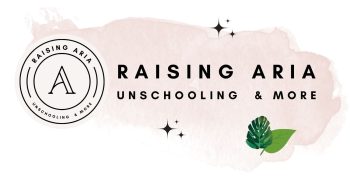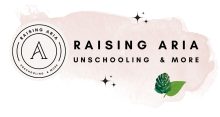When we embarked on our Unschooling Journey, one of the questions I had was whether you can unschool in a Montessori way? As I sat with my journal and pen in hand,
I realised that YES off course you can do unschooling in a Montessori Way – after all, there is no RIGHT or WRONG way to do Unschooling.
As I did more research it turned out that there are many families adopting the Montessori Unschooling Method. In this blog post I’ll shed some light on whether and how you can unschool your little one in a Montessori Way.
Montessori VS Unschooling

Montessori and unschooling are two distinct educational approaches with some fundamental differences. Montessori is a structured educational method developed by Dr. Maria Montessori, while unschooling is a more flexible and child-led approach to learning. While these two approaches can be combined to some extent, it’s essential to understand their core principles and how they might complement each other.
The Montessori Method in a nutshell
Montessori emphasises a prepared environment, hands-on learning, and guided discovery. It often involves specific Montessori materials and a structured curriculum designed to support a child’s natural development and interests. The Montessori method also encourages independence, order, and self-discipline.
See below some other posts you may be interested in relating to Montessori.
What is Montessori? Important Concepts of the Montessori Method Explained
Montessori Inspired Activities To Try with 11 Month Old Baby
Our Montessori Inspired Floor Bed Setup for 8 Month Old Baby
Unschooling in a nutshell
Unschooling, on the other hand, is based on the idea that children learn best when they follow their own interests and passions. It rejects traditional curriculum and formal schooling in favour of self-directed learning. Unschooling allows children to explore topics they are interested in and learn through real-life experiences, play, and interaction with their environment. See below some more unschooling posts you may be interested in.
What is Unschooling? Unschooling 101
7 Things I am Doing to Promote Natural Literacy in Our Home
The Synergy: Montessori and Unschooling Combined
It is possible to integrate elements of both Montessori and unschooling philosophies in your child’s education, but it would require finding a balance that works for your family and your child’s individual needs. Here are some ways you can combine elements of both approaches:
Child-led Learning in a Prepared Environment
Create a Montessori-inspired prepared environment with age-appropriate materials that align with your child’s interests. Let your child freely explore and interact with these materials at their own pace, incorporating unschooling principles of following their interests.
Hands-on Experiences
Emphasise hands-on learning experiences that allow your child to engage with the world around them. Encourage exploration, experimentation, and discovery.
Incorporate Real-Life Learning
Integrate unschooling principles by incorporating real-life learning opportunities into your child’s daily routine. Involve them in everyday activities like cooking, gardening, shopping, and household chores to teach practical life skills and foster independence.
Observe and Facilitate
Observe your child closely to understand their interests and learning preferences. As a parent or caregiver, you can act as a facilitator, providing resources, support, and guidance when needed, while also allowing them the freedom to explore on their own.
Respect Your Child’s Pace
In both Montessori and unschooling, it’s important to respect the child’s pace of learning and development. Avoid pushing them into activities they are not interested in or ready for. In Montessori this is often referred to as “follow the child’s lead”.
Foster a Love for Learning
Cultivate a love for learning by creating a positive and supportive learning environment. Encourage curiosity, critical thinking, and a growth mindset.
Tips to incorporate Montessori and Unschooling at home
Absolutely! Here are some tips on how to incorporate Montessori unschooling principles at home:
- Observe and Follow Your Child’s Interests: Pay close attention to your child’s curiosity and interests. Let their passions guide the learning process, and provide resources and opportunities to explore those subjects deeply.
- Create a Prepared Environment: Design a child-friendly space that encourages independence and exploration. Offer open-ended toys, Montessori materials, and a variety of hands-on learning resources for your child to choose from.
- Embrace Child-Led Learning: Allow your child to take the lead in their education. Avoid pushing them into specific topics or activities; instead, support their interests and provide guidance when needed.
- Encourage Practical Life Skills: Foster independence by involving your child in everyday tasks such as cooking, cleaning, and self-care. These activities not only teach valuable life skills but also promote self-confidence and responsibility.
- Provide Real-Life Experiences: Engage in real-life experiences outside the home, such as trips to the park, museums, nature walks, and community events. These experiences offer rich learning opportunities and expose your child to the world around them.
- Encourage Play and Creativity: Allow ample time for unstructured play and creative activities. Play is a child’s natural way of learning, and it fosters imagination, problem-solving, and social skills.
- Integrate Learning Into Daily Routines: Find teachable moments in everyday activities. For example, involve your child in cooking and math through measuring ingredients or practice literacy skills during story time.
- Use Montessori Materials: Incorporate Montessori materials into your child’s learning environment. These materials are designed to promote hands-on exploration and concrete learning experiences.
- Be a Learning Facilitator: Rather than a traditional teacher, take on the role of a learning facilitator. Support your child’s inquiries, answer their questions, and provide resources to help them explore further.
- Respect Your Child’s Pace: Allow your child to progress at their own pace. Avoid comparing them to others and celebrate their unique strengths and abilities.
- Document Learning Experiences: Keep a journal or portfolio of your child’s learning experiences and discoveries. It will help you track their progress and identify areas of interest.
- Be Flexible and Open-Minded: Remember that Montessori unschooling is a fluid and adaptable approach. Stay open to new ideas and be willing to adjust your approach based on your child’s changing needs and interests.
The Wrap Up
Remember that Montessori unschooling is about creating a nurturing and stimulating environment that encourages self-directed learning and celebrates your child’s natural curiosity. Embrace the journey of discovery and enjoy learning together with your child!
The effectiveness of combining Montessori and unschooling will depend on your child’s personality, learning style, and individual needs – as well as the environment that is provided.
It may require some experimentation and adjustments to find the right balance that best supports your child’s holistic development and learning journey.
We absolutely LOVE the Montessori Method and have adopted this into our unschooling practice.
Suggested Reads & References
The Montessori Unschool: A Manifesto (Part 1)











[…] Can you Montessori Unschool your child? […]